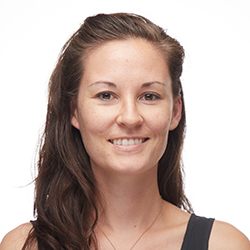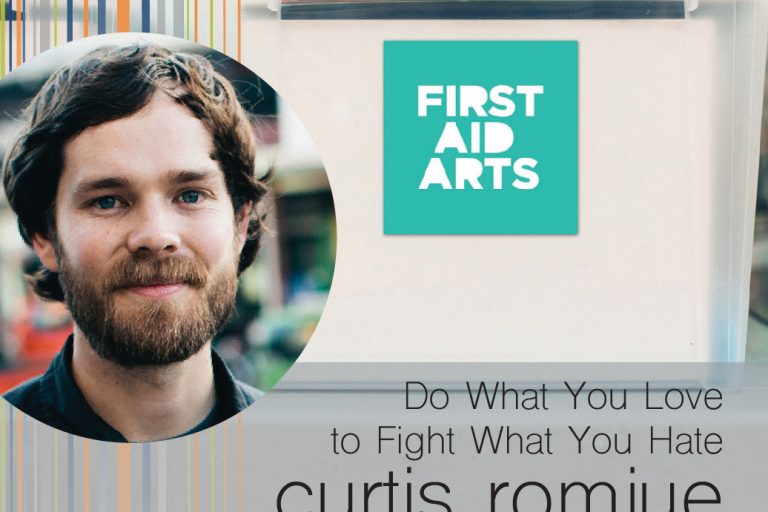
Illustration
Illustration
Visual Storytelling
for a Visual World
CBU Illustration degree develops students in the art of visual and conceptual storytelling enabling them to be strategic and effective communicators in our visual culture. Students can gain skills that can be applied to animation, book illustration, game design, graphic novels, medical illustrator, forensic artist, story-board artist, or art director.
CBU Illustration program offers a flexible undergraduate degree which allows for the student to receive a solid foundation, and built on it with their choice of emphasis including traditional or digital media.
Illustration Elective Focus
News
Ready to See Differently?
B.A. Illustration
The Bachelor of Arts in Illustration degree develops students in the art of visual and conceptual storytelling in a variety of artistic mediums, preparing them to pursue a career as a professional illustrator.
General Education Courses
The general education requirements will follow the curriculum set forth for other university programs. Some general education requirements will be met through specific major requirements.
Lower Division Requirements
ART 201 Principles of Design and Color
Units: 3. Offered: Fall, Spring.
An introduction to the principles of two-dimensional design and color theory and their use as tools for effective visual communication.
ART 208 Studio Drawing I
Units: 4. Offered: Spring.
This course functions as the introductory drawing course for Art Majors and Minors. In it, the perceptual and technical skills, and the basic media of drawing are introduced and exercised. Drawing as an historic art form is studied and used to develop a sophisticated awareness of its current expressive potential. Credit cannot be earned for ART 204 and ART 208.
ART 283 Painting 1; or GDM 215; or GDM 225
Units: . Offered: .
BIO 153 Anatomy and Physiology I
Units: 3. Offered: Fall, Spring, Summer.
This course is designed for professional nursing and general college students. Included are a general survey of human histology and the study of structure and function of organ systems of the human body, including the integumentary, skeletal, muscular, endocrine, and nervous systems. Structure and function of sensory organs are also included in the course. Should be taken with Anatomy and Physiology I Lab.
DES 101 Design Technology Applications I
Units: 3. Offered: Fall, Spring.
This is an introduction to the essential computer software tools used in the modern production of information society, with a focus on the workflow and productions native to design oriented tasks utilized in design and allied design professions. Students will be introduced to foundational design software applications – including Adobe Photoshop, Illustrator, and InDesign – and will be introduced to other workflow applications such as word processing, presentations, spreadsheets, databases, and email. Project based learning activities will provide hands-on experiences for student to practice and apply skills to real-world situations.
DES 110 Creativity: Process and Purpose
Units: 3. Offered: Fall, Spring.
This course provides an introduction to creativity through discussion and project-based learning. The course provides overview and practice of creative processes (e.g. ideation, research, empathy, proto-typing, etc), in-depth discussion of the theological foundations for creativity, and practice for developing creative habits.
GDM 240 Principles: Innovations in Design; or ART 242
Units: . Offered: .
This course surveys the conceptual underpinnings of the major movements in graphic design and digital art. Students will examine visual communication from the earliest human expressions of cave paintings to contemporary design movements to the software breakthroughs of the Digital Revolution. Students will interpret selected concepts and movements and then create their own designs using a variety of analytic methodologies.
ILL 210 Illustration I
Units: 3. Offered: Spring.
This course builds a working knowledge of the historical and contemporary illustrators and various styles and approaches to the craft. Projects will build important skills in drawing painting, color theory, storytelling and typography.
ILL 250 Digital Painting I
Units: 3. Offered: Fall.
This course will introduce digital painting methods including conceptualizing, composing, refining and evaluating digital illustration. Additionally, the course will introduce digital illustration workflows and software applications for composition, color, contrast and value as a means to broaden skill sets in storytelling. Pr-requisite: DES 101
KIN 264 Movement Anatomy
Units: 3. Offered: Fall, Spring.
A study of the muscle and bone structure of the human body and how they work together to create movement. Emphasis is on the function of specific muscles and bones in creating defined movement. Pre-Requisite: BIO 153
Upper Division Requirements
ART 304 Perspective Drawing
Units: 4. Offered: Spring (Even Years).
This course concentrates on developing a mastery of the two principle means for creating the illusion of space on a two-dimensional surface: arial and linear perspective.
Prerequisites: ART 204 or 208
ART 305 Figure Drawing I
Units: 4. Offered: Fall (Even Years).
This course is dedicated to developing facility at rendering the human form in a variety of dry media. The context for this is drawing from live models (clothed), augmented with anatomical drawing exercises It will also introduce students to the metaphorical/expressive possibilities of the human form. Prerequisite: ART 204.
DES 310 Creativity: Collaboration and Context
Units: 3. Offered: Fall.
This course builds on a foundational understanding of creativity’s process and purpose. The aim of the course is for students to apply these foundations to the act of completing interdisciplinary creative projects in context. Prerequisite: DES 110.
DES 498 Portfolio
Units: 3. Offered: Fall, Spring.
This is an interdisciplinary course where students will focus on their portfolios and final presentation specific to their industry. Standards in presentation and expectations will be examined to set guidelines for the student’s efforts in portfolio building. The goal of this course is for the student to finish with a strong, cohesive and compelling portfolio of student work. This course should focus on presentation beyond the capstone projects required for graduation.
ENG 371 The Graphic Novel
Units: 3. Offered: Fall (Odd Years).
The class represents a close examination of select graphic novels from a variety of genres and styles. It focuses on literary interpretation and analysis of individual texts, utilizing a variety of historical and contemporary critical approaches to reading, understanding, and researching the graphic novel within an interdisciplinary context.
ILL 305 Figure in Motion (4 units)
Units: 1. Offered: Fall, Spring.
This course concentrates on developing a mastery of rendering the human figure in motion via live studio drawing sessions.
Repeatable for maximum of eight (8) units. Prerequisites: ART 204 or ART 208
ILL 310 Illustration II
Units: 3. Offered: Fall.
This course will build a working knowledge of ideation, story building, technique and experimentation with media. Projects will build important art execution skills, as well as technical knowledge in the publishing industry. Pre-Requisite: ILL 210.
ILL 350 Digital Painting II
Units: 3. Offered: Spring.
This course is an advanced digital painting methods course that moves beyond basic digital workflows and software into advanced digital illustration techniques for composition, color, contrast, and value as a means to effective storytelling. Pr-requisite: ILL 250 or GDM 235
ILL 400 Special Topics in Illustration
Units: 3. Offered: As Offered.
This course will explore and present selected topics in illustration. May be repeated with change in topic for a maximum of nine (9) units of credit.
ILL 410 Illustration III
Units: 3. Offered: Spring.
This course will focus on figure work, anatomy and perspective as it pertains to character development, figures in motion, understanding Archetypes, and advanced storyboarding. Pre-Requisite: ILL 310 Illustration Majors repeat course for a total of 6 units.
PHI 312 Beauty
Units: 3. Offered: Spring.
An introduction to philosophical aesthetics, which has been marginalized and often ignored in philosophical discourse during the past four hundred years. During the last few decades the questions posted by aesthetics have moved back into the center of the philosophical discussion, including the use of the concept by “post-modern” thinkers. The course seeks to bring the student into the longer conversation concerning beauty, “retrieve” important elements that have been lost, and provide a basis for further study. Prerequisite: ARC 210, ART 242, DES 310, FLM 250, GDM 310, ILL 210, PHI 213, or PHO 330.
Optional Concentrations
Motion Design
GDM 215 Principles: Introduction to Graphic Design
Units: 3. Offered: Fall, Spring.
This foundational course provides a broad introduction to the field of visual communication by exploring 2D design concepts, processes, techniques, and production methods. Students will gain experience in the ideation, research, execution, and presentation of design related projects.
GDM 315 Practice: Designing Brand Identity
Units: 3. Offered: Fall, Spring.
This course will explore how to develop, conceptualize and craft effective design solutions in the form of a visual identity system. Students will design a variety of branding elements and strategy guidelines to visually communicate a core message across an array of products, services, and environments. Prerequisite: GDM 215
GDM 342 Motion Design I
Units: 3. Offered: Fall.
This course teaches students the fundamental skills and processes used in the motion design industry. Students will learn about storyboards, style frames, sound development, and rendering and they will use industry-standard time-based software such as Adobe After Effects to learn 2D animation principles. Prerequisite: GDM 315 or GDM 325
GDM 343 Motion Design II
Units: 3. Offered: Spring.
This upper-level course teaches advanced motion theory, as well as pipeline workflow concepts, strategies and common industry trends and practices. The emphasis is on showing the full motion design workflow in a studio-like environment from concept to final output. Prerequisite: GDM 342
GDM 352 Visual Effects Concept Design
Units: 3. Offered: Fall.
This course teaches students the primary skills and processes used in the visual effects (VFX) industry. Students will learn basic compositing and how to integrate computer graphics and 3D components with live action in a methodology that simulates standard VFX production pipelines. Pre-requisite: GDM 215 or FLP 170 or EGR 121
Fine Art
ART 283 Painting I
Units: 4. Offered: Fall (Even Years).
Projects introduce traditional painting methods in oils or acrylic paints. Applied studio work, slide lectures, group discussions, and field trips are possible. May be repeated one time for credit. Prerequisite: ART 201 or ART 204.
ART 300 Advanced Art
Units: 4. Offered: Fall (Even Years).
An essential course for the serious art student. Projects in painting, drawing and digital media. Emphasis on developing skills and concepts. Course is designed to be repeated for credit. Section (a), emphasis in painting and drawing; section (b), emphasis in digital media using the Macintosh platform; section (c), Senior Exhibit preparation. Section (c) must be taken during student’s graduating semester. May be repeated twice for credit. Prerequisite: ART 201 or 204.
ART 314 Drawing II
Units: 4. Offered: Spring (Odd Years).
This course is a continuation and expansion of more advanced techniques in drawing. There will be an emphasis on concept building and storytelling through visual imagery. Students will explore new ways to think and approach drawing and the drawing surface. Prerequisite: ART 204.
ART 383 Painting II
Units: 4. Offered: Spring (Even Years).
Projects further develop skills learned in Painting 283. Applied studio work, slide lectures, group discussions, and field trips are possible. May be repeated one time for credit. Prerequisite: ART 283.
Student Learning Outcomes
Illustration Student Learning Outcomes (SLO)
- Faith Integration: Majors will apply a Christian worldview to the moral and ethical questions inherent in the illustration industry.
- Visual Literacy: Majors will demonstrate a critical and working familiarity with the themes and concerns of illustration. Evidence of this will be manifested through directed projects and their capstone exhibition.
- Creative Thinking: Majors will demonstrate the ability to engage in associative/spatial thinking dynamically channeled through various media through directed formal and conceptual problems as well as self-determined projects.
- Media Fluency: Majors will demonstrate an ability to command the inherent dynamics of two-dimensional media as applied to the principles of professional design techniques and best-practices workflows.
- Professional Awareness: Majors will acquire the ability to integrate business concepts, to assess the professional implications of their expressive decisions and to apply techniques of professional presentation, portfolio creation, and promotion utilized in the illustration industry.
Minor, Illustration
The Bachelor of Arts in Illustration degree develops students in the art of visual and conceptual storytelling in a variety of artistic mediums, preparing them to pursue a career as a professional illustrator.
Lower Division Requirements
ART 208 Studio Drawing I
Units: 4. Offered: Spring.
This course functions as the introductory drawing course for Art Majors and Minors. In it, the perceptual and technical skills, and the basic media of drawing are introduced and exercised. Drawing as an historic art form is studied and used to develop a sophisticated awareness of its current expressive potential. Credit cannot be earned for ART 204 and ART 208.
ILL 210 Illustration I
Units: 3. Offered: Spring.
This course builds a working knowledge of the historical and contemporary illustrators and various styles and approaches to the craft. Projects will build important skills in drawing painting, color theory, storytelling and typography.
ILL 250 Digital Painting I
Units: 3. Offered: Fall.
This course will introduce digital painting methods including conceptualizing, composing, refining and evaluating digital illustration. Additionally, the course will introduce digital illustration workflows and software applications for composition, color, contrast and value as a means to broaden skill sets in storytelling. Pr-requisite: DES 101
Upper Division Requirements
ART 305 Figure Drawing I
Units: 4. Offered: Fall (Even Years).
This course is dedicated to developing facility at rendering the human form in a variety of dry media. The context for this is drawing from live models (clothed), augmented with anatomical drawing exercises It will also introduce students to the metaphorical/expressive possibilities of the human form. Prerequisite: ART 204.
ILL 310 Illustration II
Units: 3. Offered: Fall.
This course will build a working knowledge of ideation, story building, technique and experimentation with media. Projects will build important art execution skills, as well as technical knowledge in the publishing industry. Pre-Requisite: ILL 210.
ILL 350 Digital Painting II
Units: 3. Offered: Spring.
This course is an advanced digital painting methods course that moves beyond basic digital workflows and software into advanced digital illustration techniques for composition, color, contrast, and value as a means to effective storytelling. Pr-requisite: ILL 250 or GDM 235
ILL 410 Illustration III
Units: 3. Offered: Spring.
This course will focus on figure work, anatomy and perspective as it pertains to character development, figures in motion, understanding Archetypes, and advanced storyboarding. Pre-Requisite: ILL 310 Illustration Majors repeat course for a total of 6 units.
Faculty
Art in Service of Community
CBU Fine Art program is not only provides a high quality visual arts education, it is also dedicated to instilling in students the role that art can play in community, and in service of community. From the formal gallery, to popular art festivals, to service projects locally and globally, CBU Fine Art students serve through their art.
CBU Gallery
Located in downtown Riverside Arts Block, the CBU Gallery allows CBU Fine Art students to both showcase work and gain hands on experience in gallery management. Each fine art major, during their final year, will launch a solo exhibition of their work.
Community Service
CBU Fine Art is dedicated to art in community and art in service of community. On a regular basis CBU Fine Art students bring their artistic talents out of the classroom and into the community. Pictured left is a community service project whereby Fine Art students painted a mural on a local elementary schools play yard.
Community Art
CBU Fine Art is an active part of the Riverside and Inland Artistic community. From local festivals to art fairs, CBU Fine Art students are making, displaying, and showcasing original works. Pictured right is a free-standing light sculpture for the annual Riverside Lights festival.
Art Club
CBU Art club brings together visual artists to simultaneously produce art in community, and serve the community. From community art projects, to utilizing art to raise funds for community projects, the CBU Art club serves.
International Service Projects
CBU is committed to fulfilling Jesus’ mandate in the Great Commission “to go and make disciples of all nations.” To this end, CBU believes that God bestows upon every student gifts and passions to accomplish their purpose. To that end, CBU sends out more students worldwide than any other college in the country. For more information see the Office of Mobilization.





















